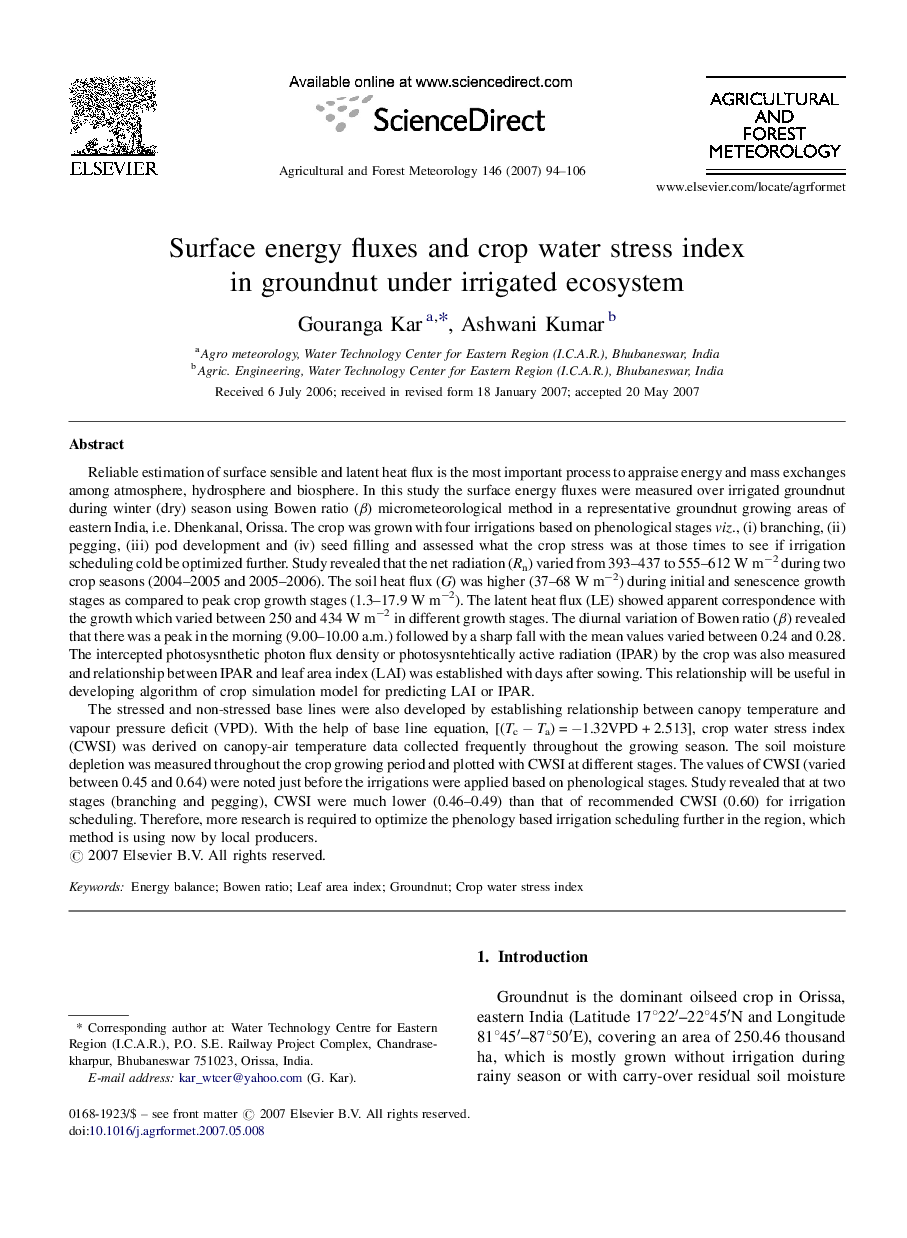| کد مقاله | کد نشریه | سال انتشار | مقاله انگلیسی | نسخه تمام متن |
|---|---|---|---|---|
| 82903 | 158426 | 2007 | 13 صفحه PDF | دانلود رایگان |

Reliable estimation of surface sensible and latent heat flux is the most important process to appraise energy and mass exchanges among atmosphere, hydrosphere and biosphere. In this study the surface energy fluxes were measured over irrigated groundnut during winter (dry) season using Bowen ratio (β) micrometeorological method in a representative groundnut growing areas of eastern India, i.e. Dhenkanal, Orissa. The crop was grown with four irrigations based on phenological stages viz., (i) branching, (ii) pegging, (iii) pod development and (iv) seed filling and assessed what the crop stress was at those times to see if irrigation scheduling cold be optimized further. Study revealed that the net radiation (Rn) varied from 393–437 to 555–612 W m−2 during two crop seasons (2004–2005 and 2005–2006). The soil heat flux (G) was higher (37–68 W m−2) during initial and senescence growth stages as compared to peak crop growth stages (1.3–17.9 W m−2). The latent heat flux (LE) showed apparent correspondence with the growth which varied between 250 and 434 W m−2 in different growth stages. The diurnal variation of Bowen ratio (β) revealed that there was a peak in the morning (9.00–10.00 a.m.) followed by a sharp fall with the mean values varied between 0.24 and 0.28. The intercepted photosysnthetic photon flux density or photosysntehtically active radiation (IPAR) by the crop was also measured and relationship between IPAR and leaf area index (LAI) was established with days after sowing. This relationship will be useful in developing algorithm of crop simulation model for predicting LAI or IPAR.The stressed and non-stressed base lines were also developed by establishing relationship between canopy temperature and vapour pressure deficit (VPD). With the help of base line equation, [(Tc − Ta) = −1.32VPD + 2.513], crop water stress index (CWSI) was derived on canopy-air temperature data collected frequently throughout the growing season. The soil moisture depletion was measured throughout the crop growing period and plotted with CWSI at different stages. The values of CWSI (varied between 0.45 and 0.64) were noted just before the irrigations were applied based on phenological stages. Study revealed that at two stages (branching and pegging), CWSI were much lower (0.46–0.49) than that of recommended CWSI (0.60) for irrigation scheduling. Therefore, more research is required to optimize the phenology based irrigation scheduling further in the region, which method is using now by local producers.
Journal: Agricultural and Forest Meteorology - Volume 146, Issues 1–2, 11 September 2007, Pages 94–106